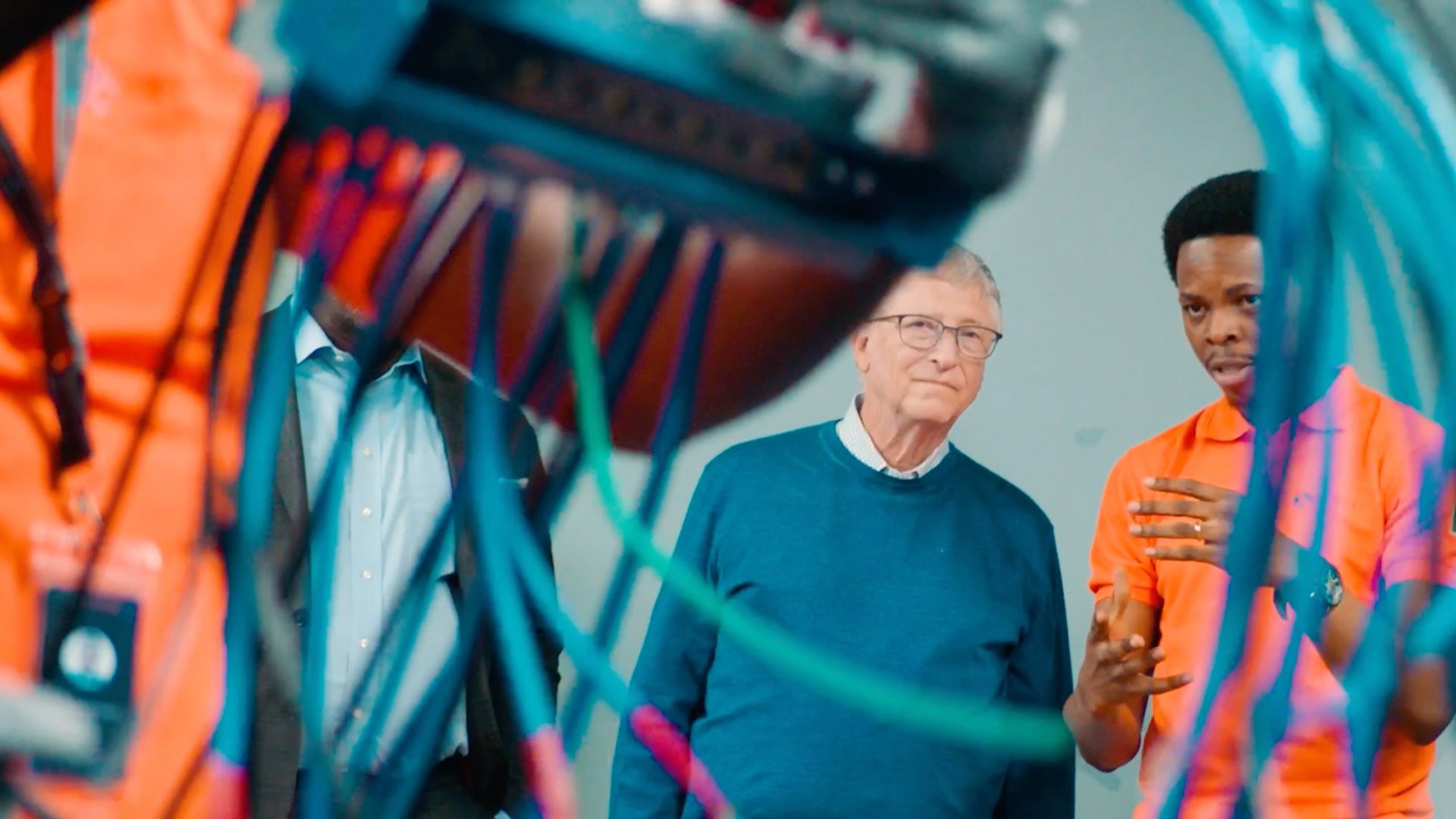At Breakthrough Energy, we get to bring people together to take on one of the toughest and most exciting challenges of our time—accelerating the world’s journey to a clean energy future.
Addressing climate change is the hardest thing humanity has ever done, but I share our founder Bill Gates’ optimism that achieving net-zero emissions is possible. At Breakthrough Energy, two questions guide our work. First, where do emissions come from? The answer is everywhere(!), but we’ve broken it down into five main sources of emissions, what we call the Grand Challenges. Second, we ask, “How much do the clean alternatives cost?” When a clean technology is more expensive than its dirty counterpart – where there’s a positive “green premium” – we know innovation is needed. Together, these questions keep us honest and act as a critical guide to where we need to focus. Ultimately, we know we won’t reach net zero unless we solve for emissions in every sector, not just some of them, and we know clean solutions won’t scale around the world until they are affordable and accessible to everyone – reaching cost parity or even becoming cheaper than the emitting technologies we rely on today.
So, where do emissions come from? The Five Grand Challenges are:
- Manufacturing (how we make things; 29% of global emissions)
- Electricity (how we plug in; 29% of global emissions)
- Agriculture (how we grow things; 20% of global emissions)
- Transportation (how we get around; 15% of global emissions)
- Buildings (how we live; 7% of global emissions)
Within each of these sources, climate technologies are at different levels of maturity. Some have only recently been discovered and exist in a lab or someone’s head, others are being developed by a company, and many are ready for deployment. These stages are what I like to call the “three Ds”: discovery, development, and deployment. They’re how we organize our work – together making up a comprehensive approach to accelerating the world’s journey to a clean energy future.
Discovery
There are many solutions to building a clean energy future that are either in their infancy or still need to be created. Our discovery stage efforts bring strategic focus to early-stage cleantech innovation. We support innovators in taking their technologies from lab to market with Breakthrough Energy Fellows, seed solutions in high-impact areas where more research and attention are needed through workshops and explorer grants, and working on other strategic initiatives like grid modeling and tackling contrails that fill critical gaps in the overall climate tech ecosystem.
Development
Once a promising clean technology solution has been invented, there is more work needed to build a great company that can support and accelerate the development of a product. Breakthrough Energy Ventures (BEV) represents the development stage of our approach. BEV helps startups further develop their teams and technologies by investing in groundbreaking startups from around the world whose technologies can significantly reduce emissions. So far, BEV has raised more than $2B in committed capital to support more than 110+ cutting-edge companies worldwide.
Deployment
Groundbreaking clean technology solutions only matter if they can be introduced at scale. Our Catalyst program supports technologies at the deployment stage by funding first-of-a-kind commercial-scale projects for emerging climate technologies. Catalyst provides capital to de-risk projects for later-stage investors while reducing the barriers that prevent technologies from progressing from development to deployment.
Investing in technologies at the discovery, development, and deployment stages is just one part of our work. We bring together corporations, investors, and startups to shape markets so industries are ready for the technologies we need for a clean energy future. Breakthrough Energy is also committed to shaping policy to ensure the public sector is doing the right things to speed our journey to net zero. Our policy teams along with our global partnerships and communications teams are key to this mission.
Our unique approach to transforming the global economy through innovation involves a world-class network of partners across the private, public, and philanthropic sectors. If we work together, we will create a future where everyone has access to affordable, abundant, and clean energy.







